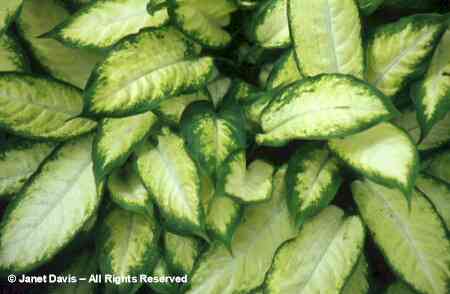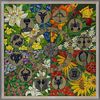Flower EncyclopediaENTER THE WORLD OF FLOWERS |
Other News
Dieffenbachia
Category: Decorative leaf
28 Jul : 11:29
To view pictures click on them








 This South American plant is an excellent ornamental plant for winter gardens and growing in the room. Difenbahiyata end leaves a colorful shade, often flowering and at ambient conditions, but the colors in a matter of fact do not represent any interest in floriculture perspective. These are small, colored in yellow - green color. Therefore it is necessary to serazvivat, but is still well after appear to be removed.
This South American plant is an excellent ornamental plant for winter gardens and growing in the room. Difenbahiyata end leaves a colorful shade, often flowering and at ambient conditions, but the colors in a matter of fact do not represent any interest in floriculture perspective. These are small, colored in yellow - green color. Therefore it is necessary to serazvivat, but is still well after appear to be removed.Difenbahiyata decorative value is its wonderful leaves. There are more than 30 varieties, some of which are pretty unique. To figure the best varieties refer D. Leopold, D. Schuttleworthiana, D. Jenmani, D. mirabilis, D. nobilis and others.
Difenbahiyata is a beautiful plant that reaches to 2-3 feet, but under normal indoor conditions, some of the lower leaves start to fall off and not look particularly attractive. This plant is not very easy for cultivation.
Difficult to tolerate low winter temperatures and dry air. With time and not so good care can remain only the upper leaves. In such slichai cut the stem, leaving 15 cm from it. Resnick can use to root the new plant.
Large and highly ornamental leaves of this plant make it a favorite interior designers.
The juice of the plant is poisonous. Wash your hands after you have taken cuttings.
Species with leaves white spots or yellow coloration love to be bright, but should not be subjected to direct sunlight. Full shade species thrive with fully green leaves as D. humilis.
Care: Temperature: Warm, protected from currents room. Over 15 掳 in winter.
Irrigation: Regular from spring to autumn. 2 weeks in winter.
Humidity: atomizing regularly. Place on rack with water and pebbles in the winter. Wiped the leaves regularly.
Replanting: In the spring of each year.
Pests: Scale Red mite and lice.
Moderate sun in summer and near the window in winter. Do not place behind curtains.
Breeding: There are various methods. Plant and cut the top of the plant. Use a rooting hormone and keep the high temperature.
Part of the stem with 2 or 3 leaf nodes wait in the same way.
Some varieties tiller from the base of the stem. Separate them carefully and planted as stecklings.
Tips:
Softening of the stem - the stem of the decay occurs when prepolivane and cold. If defeat is small, cut and sprinkle with crushed charcoal. If significant, then cut the tip to firmly and try to root it in a warm room.
Discoloration of the leaves - strong sun lunch. Move to a shady spot.
Loss of leaves - cold, dry air if the leaves are young, old fall over time
Brown edges of leaves - dry soil. Must be kept moist, but not too wet. Cold room can act the same way.
Summary:
Temperature: Moderate
Light: dim and bright summer winter
Irrigation: Profuse from spring to autumn, temperate in winter
Humidity: High, often leaves should be sprayed from time to time to wash
Grafting: Every autumn
Danger: Milky juice of the plant contain strihin, which is poisonous, irritating to skin and mucous membranes. Beware!
Category: Decorative leaf
Comments are turned off for this item0
| dieffenbachia nobilis mirabilis leopold jenmani |
You must be logged in to make comments on this site - please log in, or if you are not registered click here to signup























































